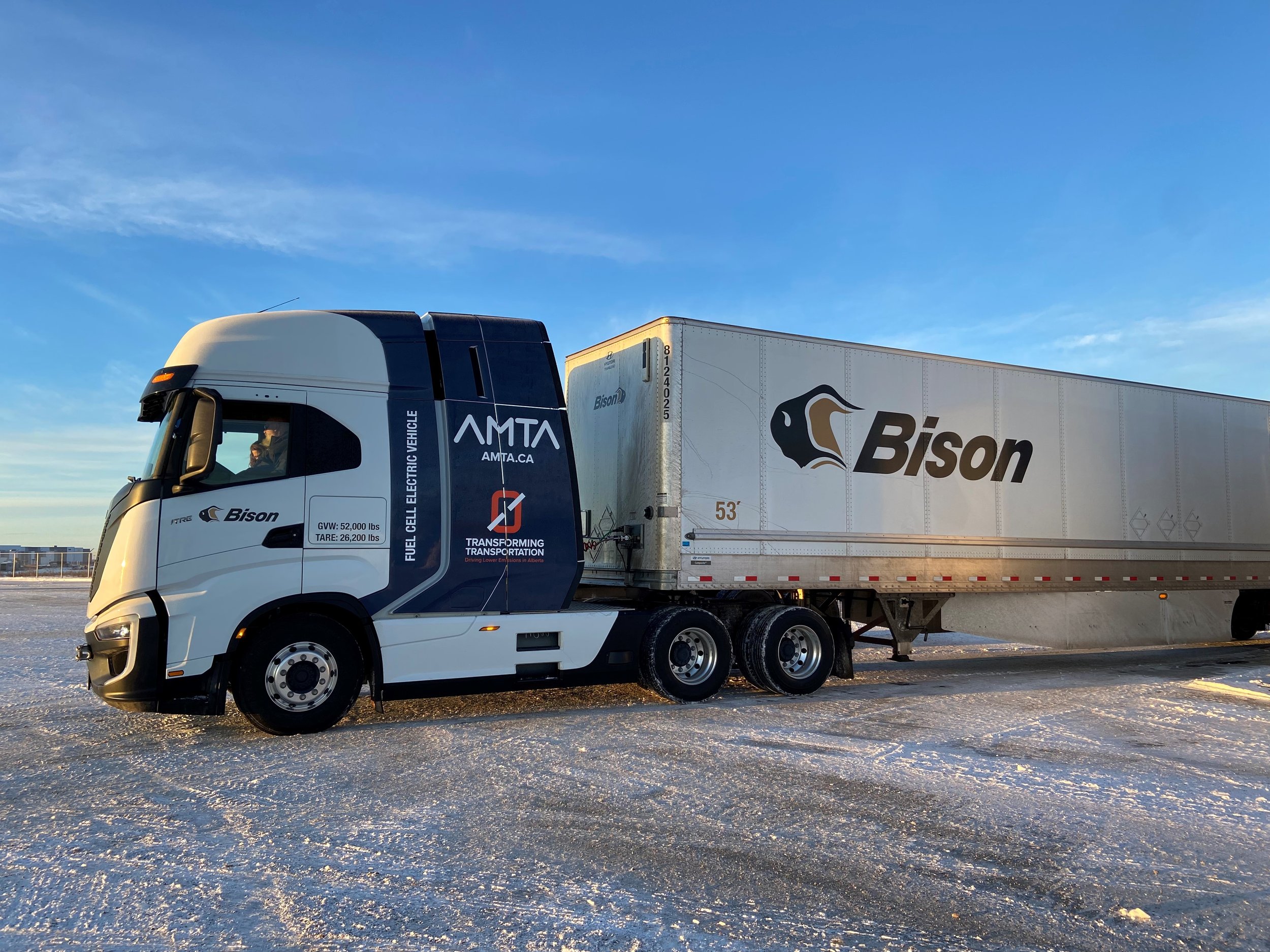A Milestone Journey: Alberta Motor Transport Association’s (AMTA) Historic Drive on Alberta’s Busiest Corridor with Nikola FCEV
On January 24, 2024, AMTA completed a Canadian first by taking AMTA’s Nikola Hydrogen Fuel Cell Electric Vehicle (FCEV) through Alberta’s busiest corridor using only 61% of the tank of hydrogen.
This historic roundtrip on the QEII between Edmonton and Calgary was a tremendous success and proved these zero-emissions vehicles (ZEV) are more than capable for long-haul operations in our province and climate, compared to other ZEV capacities tested in Alberta better suited for return-to-base short-haul operations.
For this initial test, the FCEV was driven by Bison Transport’s Dave Lowe – a professional driver with 27 years’ experience – hauling an empty Bison Transport trailer weighing 14,000lbs. The choice to haul an empty trailer was made due to several factors; first and foremost being this was the maiden voyage and initial test down the QEII, and all parties wanted to ensure that if any issues or delays occurred at any point in the journey there would be no risk to the goods for a customer of Bison’s. As this vehicle supports 82,000lbs, the next step will be to determine hydrogen consumption with a stocked trailer.
This milestone achievement not only underscores the prowess of hydrogen fuel cell technology but also represents significant strides towards a greener and more sustainable future for commercial transportation. This collaborative effort aimed to showcase the viability and efficiency of hydrogen fuel cell technology in long-haul transportation, particularly on one of Canada’s busiest and most critical corridors.
Another significant aspect of this round-trip drive was to illustrate to industry that these trucks can work in the harsh Canadian winters and challenge the doubt and preconceived notions that zero-emissions vehicles are unable to operate in the Canadian climate. This particular drive started at -11C and ended around 0C. FCEVs are viable for commercial transportation, and as we develop the necessary fueling infrastructure, this is an obtainable option for hauling goods on the Edmonton/Calgary corridor, and beyond.
There are many technologies involved in the operation of an FCEV, but one of the most significant is ‘regenerative braking’. This means that while regenerative braking is engaged, the vehicle generates battery power. This is extremely significant, especially for longer journeys, because there is an opportunity to gain energy that might be lost during ‘regular’ operation of the vehicle.
AMTA’s Nikola hydrogen FCEV demonstrated its capability to cover significant distances on less than a tank of hydrogen and without needing to refuel, showcasing the practicality of hydrogen fuel cell technology for commercial transportation in our province.
As the commercial transportation industry explores and embraces such eco-friendly solutions, the journey from Edmonton to Calgary becomes more than just a drive—it becomes a step towards a more sustainable future.
AMTA is thrilled to work with partners such as Nikola and Bison Transport on these exciting projects and wants to thank PrairiesCan for the support in making these projects possible. This event is an enormous win for our province in the zero-emissions sector, and there is so much more to come.
To learn more about this and other exciting projects that AMTA is working on, visit our website transformingtransportation.ca.
Watch the historic journey here:
For media inquires:
media@amta.ca
About AMTA
The Alberta Motor Transport Association is a not-for-profit, advocacy and safety training association that functions as The Voice, The Standard and The Resource for commercial transportation in Alberta. For more than 86 years, our work has encompassed a broad range of environmental, social, economic, safety and compliance matters that impact provincial highways. Safety, research, and innovation are at the heart of our projects, enabling AMTA to bring key stakeholders together to lead research and develop new technologies that will significantly enhance the industry while reducing human and environmental impacts.

